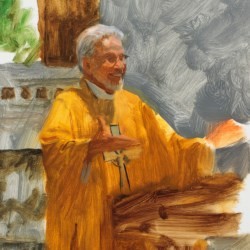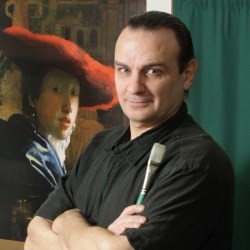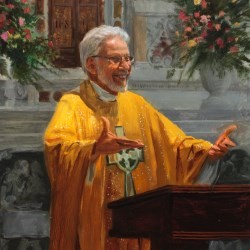I pretty much learned all my painting skills from my father. He was a free-lance illustrator and portrait painter who worked at home in his studio, so I was immersed in the art business.
I had a sort of old fashioned master/apprentice relationship with my father, where I eventually got good enough that I helped work on some of his paintings.
After high school I went to art school far a year and a half. Then I got a job painting portraits of retired mayors and teaching community art classes. Teaching proved to be a valuable experience for me.
I worked for American Greetings, but I was fired after 3 months. They actually did me a favor by forcing me to get my priorities straight and to pursue what I really liked best: painting people.
I started by drawing sketches of people at local art shows. I showed samples of my oil paintings along with the drawings and gradually I picked up commissions to do oil portraits.







